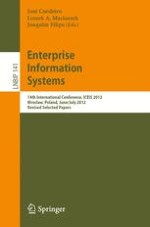2013 | OriginalPaper | Buchkapitel
Measuring Users’ Emotions with a Component-Based Approach
verfasst von : Rogério Aparecido Campanari Xavier, Vânia Paula de Almeida Neris
Erschienen in: Enterprise Information Systems
Verlag: Springer Berlin Heidelberg
Aktivieren Sie unsere intelligente Suche, um passende Fachinhalte oder Patente zu finden.
Wählen Sie Textabschnitte aus um mit Künstlicher Intelligenz passenden Patente zu finden. powered by
Markieren Sie Textabschnitte, um KI-gestützt weitere passende Inhalte zu finden. powered by
